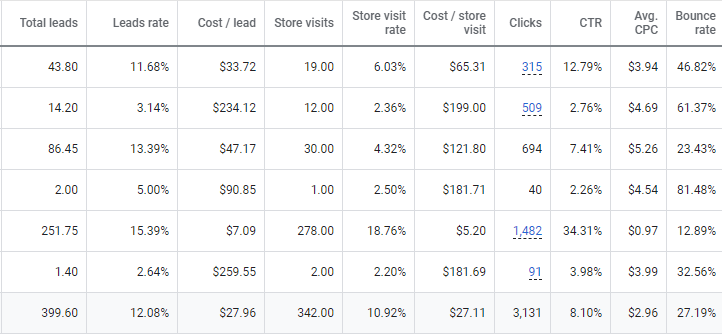How do you measure the success of a Google Ads campaign? Do you look at all metrics with the same importance? In this blog, we take a look at Key Performance Indicators (KPIs) and their importance in driving desired results.
There are many types and ways to categorize the Google Ads KPIs and it strictly depends on the business field, client, and marketer. You may want to categorize them by level of importance.

Primary
As an automotive marketing agency, we are mainly focused on bringing potential car buyers to our clients. Even though the Covid-19 pandemic helped unlock the door for online car shopping, the traditional way of engaging directly with or visiting a dealership is still the most popular. And in-person foot traffic that paid search campaigns bring to our clients is the most important digital market tactic for delivering desired results.
Leads
Leads or “hard” conversions – include phone calls, click to calls, and form submissions that represent action or intent on the part of the buyer. Determine which action or actions your visitors prefer to take, so you can gauge behavior and set your website up to encourage those actions.
Leads Rate
Leads rate represents the percentage of visitors who converted (i.e., called or submitted a form) after visiting the website. If lead rate is low, check for the factors contributing to it such as landing pages used, users’ needs versus displayed inventory, calls to action displayed on the landing pages, or devices used.
Cost Per Lead
Cost per lead is a great measurement of how much, on average, it costs to obtain a phone call or form submission. If a cost per lead is high, check to see if some of the keywords across your campaigns are not overlapping each other. If they are, you may want to consider adding or excluding some keywords or negative keywords.
Store visits
Store visits determine which areas on your site generate the most valuable or the highest amount of conversions from paid search campaigns. Store visits, for example, are a type of conversion that identifies potential customers who clicked ads and then visited a business with a very high accuracy. A store visit increases the opportunity to create a customer. With this metric, you can better understand your return on investment and thus make more informed decisions on content, tactics, and strategies surrounding your campaigns.
Store Visits Rate
Store Visits Rate can help you identify how many campaign-initiated clicks resulted in store visits. It is a great way to measure the quality of your calls to action in ad copy.
Cost Per Store Visit
Just like the cost per lead metric, the cost per store visit helps you measure cost to obtain a visit. It is a great way to look at the return on investment from your campaigns and determine where you may be able to improve.
Secondary
The secondary metrics are useful for getting an overall indication of a campaign’s performance, however they are not a great way of measuring performance against your businesses goals as they don’t provide enough information.
Clicks
This metric indicates how much traffic your campaigns are generating. It depends on the campaign’s budget and the search keywords used. If a campaign gets many clicks, just by itself, it doesn’t mean a lot, as this traffic might not be highly relevant to your campaign’s goal. If a campaign has a lot of clicks and a low click-through rate (CTR), you may need to check the keyword report and potentially add negative keywords to your campaign.
CTR
Click-through rate is the number of clicks your ad generates, divided by the number of times your ad is shown. The higher click-through rate a campaign has, the more relevant it is to searchers. CTR is also one of the factors that determine the quality score of your adverts and, ultimately, the cost you’ll pay for your clicks.
CPC
Cost-per-click helps you distinguish which campaigns are most cost-effective. Usually, a low CPC is considered a good thing, though this doesn’t always mean that a campaign is successful. Broad match keywords may have lower CPC, but the quality of the traffic they bring is not always the most relevant.
Bounce Rate
Bounce rate is the percentage of visitors to a particular website who navigate away from the site after viewing only one page. For example, if a user landed on a lease page and then checked inventory, bounce rate would be zero percent as they didn’t actually bounce from the website.
If you need help with measuring the success of your Google Ads campaign, contact us today. The SEM team at Aronson Advertising is always ready to help you and your business succeed in the paid search marketing journey!
